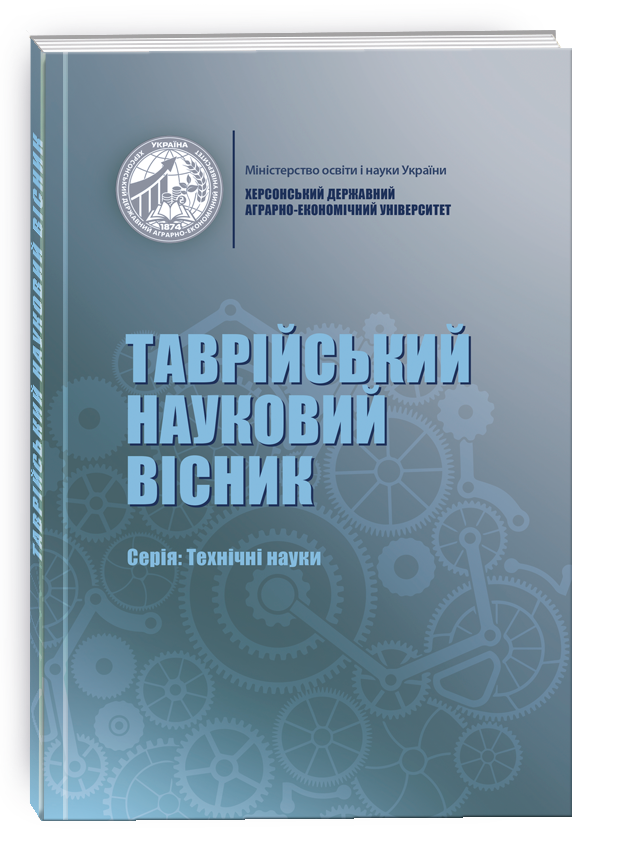CONCEPT OF IMPROVING METHODS FOR DESIGNING MULTIMEDIA WEB-BASED INFORMATION SYSTEMS
DOI:
https://doi.org/10.32782/tnv-tech.2025.1.16Keywords:
multimedia web-based information systems; multimedia technologies; information systems development methods; principles, approaches, and practices for MWIS development support; MWIS application areas; improvement of MWIS development methodsAbstract
This article is dedicated to the concept of improving methods for designing multimedia web-based information systems (MWIS). It encompasses the theoretical and methodological foundations for developing MWIS that integrate a wide range of multimedia technologies to address tasks related to users’ informational activities in various fields such as business, education, culture, entertainment, and others. The authors emphasize the need to adapt development methods for non-professional users who utilize these systems irregularly. The primary focus is on facilitating informational work and enhancing user interaction efficiency with MWIS by integrating emotional, cognitive, and intuitive aspects into the design process.The article formulates a hypothesis that improving the quality and efficiency of users’ informational activities can be achieved by creating more complex and personalized MWIS capable of engaging users at all stages of their activities–from searching for and evaluating information to decision-making and implementation of actions.Additionally, the article examines key challenges associated with the application of modern MWIS design methods, such as neglecting user-specific requirements, insufficient attention to content and interface adaptation in rapidly changing environments, as well as risks related to excessive complexity and user overload. Solutions to these issues are proposed through the implementation of flexible and adaptive development technologies, the use of artificial intelligence tools for content generation, and the creation of interactive scenarios incorporating elements of virtual and augmented reality.
References
Пушкар О.І. та ін. Управління інформаційною діяльністю підприємств в економіці знань. Монографія / О.І. Пушкар, С.О. Назарова, К.С. Сібілєв. Х.: Вид. ХНЕУ, 2012. 560 с.
Вадим Лавренюк. Альберт Ейнштейн та медіація. [Електронний ресурс]. Режим доступу: https://protocol.ua/ua/albert_eynshteyn_ta_mediatsiya_1/.
С. В. Боцман, «Проектування веб-орієнтованої інформаційної системи обліку хворих лікаря невропатолога», на ХІ регіональній студ. наук.-техн. конф. Наука – перші кроки: тези доп. (м. Маріуполь, 24-28 квіт. 2017 р.): в 4 т. / ДВНЗ «ПДТУ». Маріуполь, 2017, т. 4, с. 23-24.
О. В. Мацібора, «Веб-орієнтовані геоінформаційні системи та їх використання для обробки палеогеографічних даних», Український географічний журнал, (1), с. 51-58, 2019. [Електронний ресурс]. Режим доступу: https://doi. org/10.15407/ugz2019.01.051.
K. Golhani, A. S. Rao, and J. C. Dagar, «Utilization of open-source Web GIS to strengthen climate change informatics for agriculture», in Climate Change Modelling, Planning and Policy for Agriculture, Springer India, 2015, pp. 87-91. Available: https:// doi.org/10.1007/978-81-322-2157-9_10.
K. D. Schewe, and B. Thalheim, «Design and development of Web information systems», in Systematic Development of Web Information Systems. Springer- Verlag GmbH Germany, part of Springer Nature, 2019, p. 2. Available: https://doi. org/10.1007/978-3-662-58824-6_13.
S. Orenga-Roglá, and R. Chalmeta, «Methodology for the implementation of knowledge management systems 2.0», Business & Information Systems Engineering, Springer, vol. 61, iss. 2, pp 195-213, April 2019.
H. Kniberg, and M. Skarin, Scrum and Kanban: making the most of it. C4 Media Inc, Ed. InfoQ.com., 2010.
М. Кон, Scrum: Гнучка розробка ПЗ. Опис процесу успішної гнучкої розробки програмного забезпечення. Діалектика. Вільямс, 2015 року.
S. Jeff, SCRUM. The art of doing twice the work in half the time. New York, USA: Crown Business, 2016.
Ma’arif, Muhamad & Shahar, Siti Mariam & Yusof, Mohd Fikri Hafifi & Safie, Hizam. (2018). The Challenges of Implementing Agile Scrum in Information Systems Project. Journal of Advanced Research in Dynamical and Control Systems. 2357-2363.
Deliwe, Ayanda Pamella. (2020). The Use of Learner Management System (MOODLE) in Promoting Teaching and Learning. Universal Journal of Educational Research. 8. 8383-8392. 10.13189/ujer.2020.082644.
Постоленко І. С. Досвід використання системи Moodle для навчання іноземних мов. 2014 [Електронний ресурс]. Режим доступу: https://dspace.udpu.edu. ua/bitstream/6789/2906/1/postolenko_sunduk_tezy.pdf.
Томіліна А. О. Використання електронної платформи Moodle при контролі й оцінюванні з англійської мови у вищому навчальному закладі / А. О. Томіліна. // Теорія і практика використання системи управління навчанням Moodle». (Київ, КНУБА, 30-31 травня 2013 р.): тези доповідей. 2013. С. 67.
Baskerville, B. & Robb, T. Using Moodle for teaching business English in a CALL environment. PacCALL journal 1(1), 2005, 138–151.
Bateson, Gordon. Intermediate Moodle: Ideas for language teachers. The JALT CALL journal, 4(2), 2008, 73-79. 18. Hinkelman, Don & Grose, Timothy. Placement testing and audio quiz making with open source. To Moodle or not to Moodle (Nozawa) software. PacCALL journal, 1(1), 2005, 974–981.
Ruggieri, Roberto & Savastano, Marco & Scalingi, Alessandra & Bala, Dorina & D’Ascenzo, Fabrizio. (2018). The impact of Digital Platforms on Business Models: An empirical investigation on innovative start-ups. Management & Marketing. 13. 1210-1225. 10.2478/mmcks-2018-0032.
Martins P. A Web-based Tool for Business Process Improvement. International Journal of Web Portals. 2017. № 9. Рp. 68–84. DOI: https://doi. org/10.4018 /IJWP.2017070104.
Vultur O. M., Pentiuc S. G., Lupu V. Real-time gestural interface for navigation in virtual environment. In 2016 International Conference on Development and Application Systems (DAS). 2016. Рp. 303–307.
Chuma, L. L. (2020). The role of information systems in business firms competitiveness: Integrated review paper from business perspective. International Research Journal of Nature Science and Technology, 2(4), 29. https://www. scienceresearchjournals.org.
Краснякова, А. О. (2020). Цифрова компетентність користувачів інтернету: соціально- та політико-психологічні аспекти дослідження. Проблеми політичної психології. Збірник наукових праць, 8(22), 198. УДК 316.772.5.
О. Р. Карплюк, «Методи і засоби створення мультимедійного контенту із застосуванням штучного інтелекту», кваліфікаційна магістерська робота, Національний авіаційний університет, Київ, 2023.
Howe, Neil; Strauss, William (1997). The Fourth Turning: What the Cycles of History Tell Us About America’s Next Rendezvous with Destiny. New York: Broadway Books. ISBN 978-0-7679-0046-1.
Джозеф Латан. Чому STEAM такий важливий для освіти 21 століття. [Електронний ресурс]. Режим доступу: https://onlinedegrees.sandiego.edu/steam-education-in-schools/.
Б. Джозеф Пайн II, Джеймс X. Гілмор. Економіка вражень. Битва за час, увагу та гроші клієнта. Видавництво «Vivat»; К.; 2021. 416 с.
Тетяна Петросян. AI-інструменти для UI/UX-дизайнерів. – [Електронний ресурс]. Режим доступу: https://lemon.school/blog/ai-instrumenty-dlya-ui-ux-dyzajneriv.
Вадим Власенко. Що може робити ШІ на вашому проєкті – горизонтально і вертикально. Досвід архітектора. [Електронний ресурс]. https://dou.ua/forums/ topic/44863/.
Олег Васильєв. GitHub Copilot, GitHub Copilot Х і ChatGPT. Досвід використання і поради для інженерів. [Електронний ресурс]. https://dou.ua/forums/ topic/43951/.
Web Academy Media. GitHub Copilot, GitHub Copilot Х і ChatGPT. Досвід використання і поради для інженерів. [Електронний ресурс]. https://web-academy. ua/blog/junior/how-ai-will-transform-project-management.
Катерина Чуб. Штучний інтелект для дизайнерів: топ-8 корисних інструментів для роботи. [Електронний ресурс]. https://proit.ua/shtuchnii-intieliekt-dlia- dizainieriv-top-8-korisnikh-instrumientiv-dlia-roboti/.
Друкарня HUSS. Штучний інтелект у верстці: автоматизація дизайну каталогів. [Електронний ресурс]. https://huss.com.ua/shtuchniy-intelekt-u-verstci- avtomatizaciya-dizaynu-katalogiv/.
Пушкар О., Полякова Г. Багатоконтурна адаптація у цифровому освітньому середовищі закладу вищої освіти. Електронне наукове фахове видання «Адаптивне управління: теорія і практика» Серія «Педагогіка», Випуск 19 (37), 2024; Електронна версія. Режим доступу: https://doi.org/10.33296/2707-0255-19(37)-06 ; https://amtp.org.ua/index.php/journal/article/view/707/605.
Pushkar A. I. Innovative methods of managing consumer behaviour in the economy of impressions, or the experience economy / A. I. Pushkar, Y. L. Kurbatova, E. S. Druhova // Economic Annals-XXI. 2017. 165(5-6) Р. 114-118.
Matteo Cristofaro. Herbert Simon’s bounded rationality: Its historical evolution in management and cross-fertilizing contribution // April 2017Journal of Management History (Archive) 23(2):170-190.
Христич О. Штучний інтелект у рекламі як AI оптимізує кампанії та підвищує продажі / О. Христич [Електронний ресурс]. Режим доступу: https://speka.media/ stucnii-intelekt-u-reklami-yak-ai-optimizuje-kampaniyi-ta-pidvishhuje-prodazi-p6mr8o







